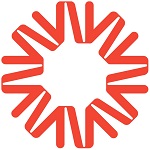Cryptocurrencies continue to capture the attention of investors and technology enthusiasts worldwide. One of the most discussed projects was Terra (LUNA), which introduced a unique approach to creating and managing stablecoins but collapsed dramatically. Its fall caused a major ripple effect in the cryptocurrency market and forced many to reconsider their investment strategies and risk assessments.
What is Terra (LUNA)?
Terraform Labs, founded in 2018, created Terra, a blockchain platform designed to develop decentralized stablecoins pegged to fiat currencies such as the US dollar. Terra’s primary innovation was its algorithmic stablecoin TerraUSD (UST), backed by the LUNA cryptocurrency.
The Сreation of Terra and Its Features
South Korean entrepreneurs Do Kwon and Daniel Shin founded Terra with the idea of combining the stability of traditional currencies with the decentralized nature of cryptocurrencies. Terra introduced a unique dual tokenomics mechanism: LUNA acted as collateral for UST and other stablecoins on the Terra platform.
The mechanism for maintaining UST’s price stability worked as follows: when the UST’s price exceeded $1, users could exchange LUNA for UST, increasing supply and bringing the price back down to $1. Conversely, when UST’s price dropped below $1, the process reversed. Theoretically, this algorithm was supposed to maintain UST stability.
The Collapse of Terra
In May 2022, the system faced a crisis it couldn’t survive. A massive withdrawal of UST led to a liquidity shortage, making it difficult to maintain its dollar peg. Instead of stabilizing, the algorithm placed even more pressure on LUNA, leading to a sharp drop in its value. As a result, UST lost its peg to the dollar, destabilizing the entire Terra ecosystem. This turmoil also contributed to broader market volatility, with cryptocurrencies like Ripple experiencing price fluctuations as investor confidence in digital assets wavered.

Comparison with Ethereum
Terra is often compared to Ethereum because both platforms aimed to build decentralized applications (dApps) and services. However, unlike Terra, Ethereum did not focus on creating stablecoins as a core feature. Ethereum offers broader functionality and a more robust infrastructure, making it less prone to such catastrophic failures. Despite this, during periods of market turbulence, such as after Terra’s downfall, even Ethereum price experienced significant volatility, reflecting the widespread impact on investor sentiment.
Stablecoins: UST vs USDT
USDT (Tether) is a centralized stablecoin pegged to the US dollar and backed by real assets, making it far more stable compared to algorithmic stablecoins like UST. Other popular stablecoins, such as USDC, also use similar asset-backed models, providing greater reliability in volatile markets.
Consequences of the Terra Collapse
The downfall of Terra in May 2022 had a significant impact on the cryptocurrency industry:
- Loss of confidence in algorithmic stablecoins. Investors became more cautious about algorithmic stablecoins, leading to a reassessment of projects with similar designs.
- Regulatory scrutiny. The collapse attracted the attention of regulators, which may result in stricter rules and oversight for stablecoins and cryptocurrencies in the future.
- Increased risks for DeFi projects. Many DeFi projects relied on UST and LUNA experienced liquidity issues and a loss of trust from users.
The Launch of Terra 2.0
After Terra’s collapse, the development team introduced Terra 2.0 in May 2022. The original blockchain was renamed Terra Classic (LUNC). Terra 2.0 focuses on decentralized applications and services, abandoning the use of algorithmic stablecoins. As part of the recovery plan, new LUNA tokens were distributed to affected investors.
Lessons from Terra’s Collapse
The fall of Terra and UST serves as a critical lesson for the entire cryptocurrency industry. It underscored the importance of stablecoin reliability, liquidity, and thorough risk assessment for algorithmic models. While Terra 2.0 offers new opportunities, it’s crucial to remember past mistakes and factor them into future investments and developments.

Disclaimer: The views expressed in this article are those of the author and may not reflect the views of the CryptoTotem team. This article is for informational purposes only and is not intended to be used as legal, tax, investment or financial advice. The author or the publication does not hold any responsibility, directly, or indirectly, for any damage or loss caused or alleged to be caused by or connected with the use of or reliance on any content, goods or services mentioned in this article. Readers should do their own research before taking any action on this matter.





